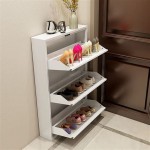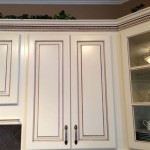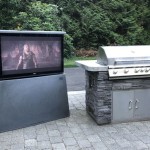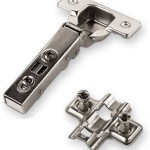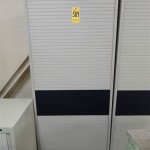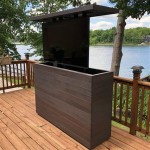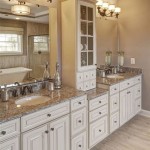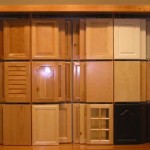Famous Fancy File Cabinet Ideas For Schools and Offices
The evolution of the file cabinet extends beyond its primary function as a repository for documents. In contemporary school and office environments, file cabinets are increasingly viewed as elements contributing to the overall aesthetic and functional efficiency of the space. Designing a "fancy" file cabinet involves considering not only its storage capacity and organization but also its material, finish, and integration with the existing decor. These enhancements serve to elevate the mundane into something visually appealing, and potentially, more conducive to productivity.
The desire for file cabinets that are both functional and aesthetically pleasing has fueled innovation in design and material usage. Architects, interior designers, and manufacturers are exploring various approaches to transform the traditional, utilitarian file cabinet into a statement piece. This includes incorporating unique finishes, hardware, and even integrating technology to enhance usability and security.
In examining "famous fancy file cabinet ideas," it's important to acknowledge that "famous" is relative. The level of recognition may vary depending on the design community, specific industry, or even regional preferences. However, certain trends and innovative approaches consistently garner attention for their distinctiveness and impact on the office or school environment.
Material Innovations and Aesthetic Finishes
One key area of innovation lies in the selection of materials. Departing from the standard steel construction, designers are now incorporating wood, glass, and even acrylic to create file cabinets that blend seamlessly with sophisticated interiors. For example, a file cabinet crafted from reclaimed wood with a distressed finish can add a touch of rustic charm to a modern office. The use of wood veneers, applied to a durable metal core, offers a balance between aesthetic appeal and structural integrity. High-gloss lacquer finishes in bold colors can transform a simple filing cabinet into a striking focal point.
The integration of glass elements, such as glass tops or doors, offers a glimpse into the contents while maintaining a level of visual separation. Frosted glass can provide a sense of privacy while still allowing light to permeate, creating a more open and airy feel. Acrylic materials, particularly in translucent or opaque colors, can be molded into unique shapes and designs, creating file cabinets that are both functional and sculptural.
Beyond the primary material, the hardware also plays a significant role in the overall aesthetic. Replacing standard metal handles with custom-designed pulls made from brass, leather, or even ceramic can elevate the look and feel of the file cabinet. The finish of the hardware, whether polished, brushed, or antique, can further enhance the design concept. Decorative elements such as inlaid patterns, carvings, or even painted motifs can be added to create truly unique and personalized file cabinets.
In school settings, where durability and ease of maintenance are paramount, the use of laminate finishes with playful patterns or educational themes can transform file cabinets into engaging elements of the learning environment. Durable, scratch-resistant laminates can withstand the wear and tear of daily use while adding a touch of visual interest to classrooms and hallways.
The selection of material and finish should also consider the overall sustainability of the product. Choosing recycled materials, low-VOC finishes, and sustainable manufacturing processes can contribute to a greener and more environmentally responsible school or office environment. Consideration of the life cycle of the materials used is critical to minimizing the environmental impact and ensuring long-term value.
Integration of Technology and Enhanced Functionality
The concept of a "fancy" file cabinet extends beyond mere aesthetics; it also encompasses the integration of technology to enhance functionality and security. In today's digital age, the need to manage both physical and digital documents is essential. File cabinets can be equipped with features such as integrated charging stations for mobile devices, built-in lighting systems, and even biometric access control for sensitive information.
The incorporation of smart locks, controlled via smartphone or keycard, can restrict access to confidential files and records. These systems can also provide audit trails, tracking who accessed the cabinet and when. This is particularly valuable in environments where security is a top priority, such as school administrative offices or corporate legal departments.
Some file cabinet designs incorporate integrated scanners that allow users to quickly digitize documents and store them electronically. This can streamline workflows and reduce the reliance on paper. The scanned documents can be automatically organized and indexed, making them easily searchable and accessible from any device.
The integration of lighting systems can improve visibility and make it easier to locate specific files. LED lights, integrated into the interior of the cabinet or along the edges, can provide ample illumination without generating excessive heat. These lights can be controlled by sensors that automatically turn on when the cabinet is opened and off when it is closed, conserving energy.
In educational settings, file cabinets can be integrated with interactive displays to create engaging learning stations. Students can access digital resources, view multimedia presentations, or even participate in collaborative projects using these interactive displays. The file cabinet itself can serve as a storage space for learning materials and supplies, creating a self-contained and organized learning center.
Furthermore, the concept of modularity plays a vital role in enhancing functionality. File cabinets designed with modular components can be easily reconfigured or expanded to meet changing storage needs. This flexibility allows schools and offices to adapt their storage solutions to evolving requirements without having to replace entire cabinets. Modular file cabinets can also be customized with various accessories, such as adjustable shelves, dividers, and drawers, to optimize the organization of different types of documents and materials.
Customization and Personalization for Unique Spaces
A truly "fancy" file cabinet is one that is tailored to the specific needs and aesthetic preferences of the school or office environment. Customization and personalization are key to creating file cabinets that are not only functional but also reflective of the organization's brand identity and culture. This can involve selecting specific colors, materials, and finishes, as well as incorporating unique design elements that align with the overall aesthetic of the space.
In school environments, file cabinets can be customized with school colors, logos, and mascots to create a sense of school spirit and identity. Teachers can personalize their file cabinets with artwork, quotes, and other decorative elements that reflect their individual teaching styles. This can help to create a more welcoming and inspiring learning environment for students.
In office environments, file cabinets can be customized to reflect the company's brand identity and values. This can involve incorporating company colors, logos, and taglines into the design of the cabinet. The use of specific materials and finishes can also help to create a cohesive and professional look that reinforces the company's brand image.
Beyond aesthetics, customization can also involve modifying the internal configuration of the file cabinet to accommodate specific storage needs. For example, a law firm may require file cabinets with extra-deep drawers to store legal-sized documents, while a design studio may need file cabinets with adjustable shelves to store large-format drawings and blueprints.
The use of custom-designed hardware, such as handles and pulls, can also add a personal touch to file cabinets. These hardware elements can be made from a variety of materials, including brass, leather, wood, and even 3D-printed plastic. The design of the hardware can be inspired by the company's logo, its products, or even the surrounding architecture.
Ultimately, the goal of customization and personalization is to create file cabinets that are not only functional and aesthetically pleasing but also reflective of the unique identity and culture of the school or office. By paying attention to the details and incorporating custom design elements, it is possible to transform a mundane file cabinet into a statement piece that enhances the overall look and feel of the space.

Transforming Ludovico Office Expand Furniture

File Cabinets At Com

Best File Cabinets 2024 Forbes Vetted

14 Best Filing Cabinet Options Under 200 That Are Stylish And Practical Architectural Digest

Modern File Cabinets 3 Drawer Filings Rolling More Cb2

File Cabinets At Lumens

File Cabinets At Lumens

Stylish Filing Cabinet Makeover

Diy File Cabinet Desk Tutorial Over The Big Moon Home Office Design Furniture

11 Necessary Accessories To Boost Your File Cabinets
Related Posts

